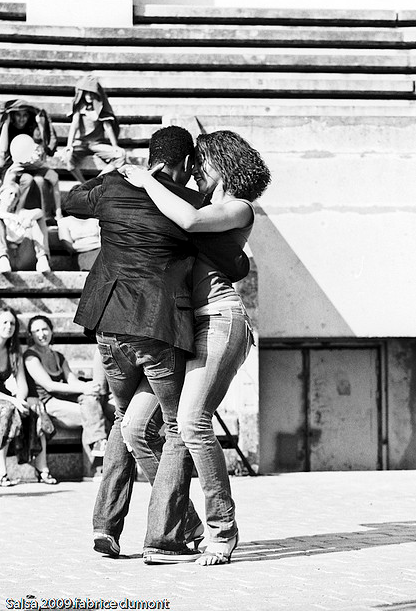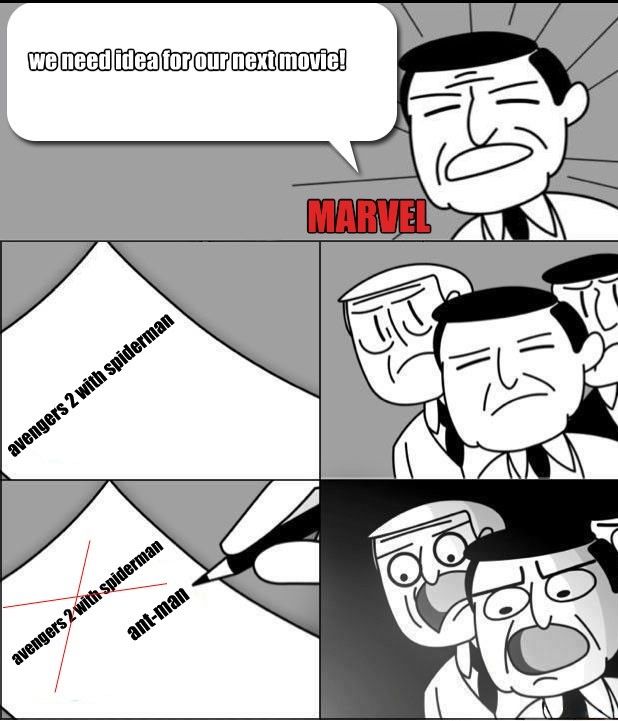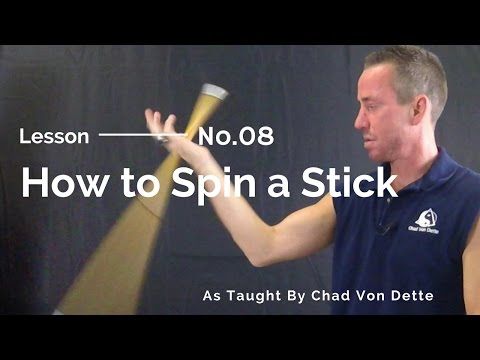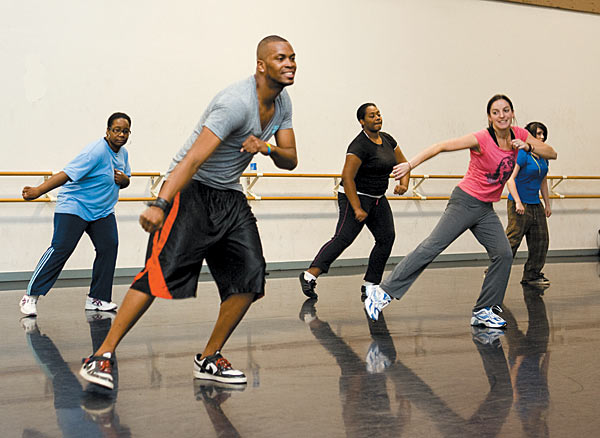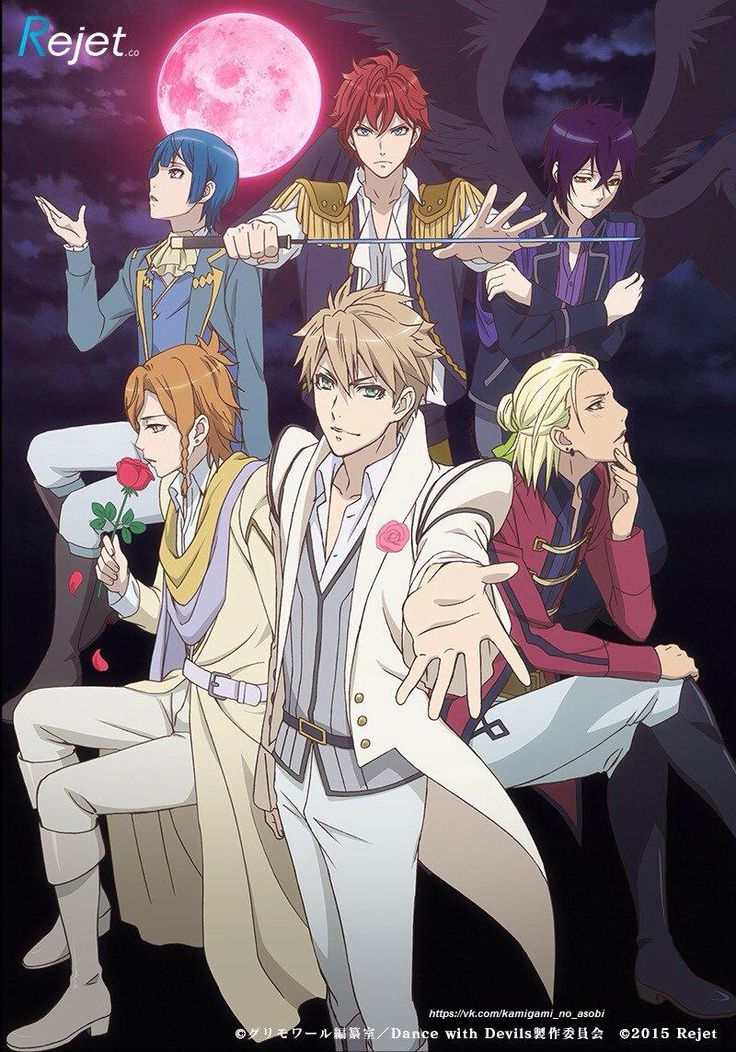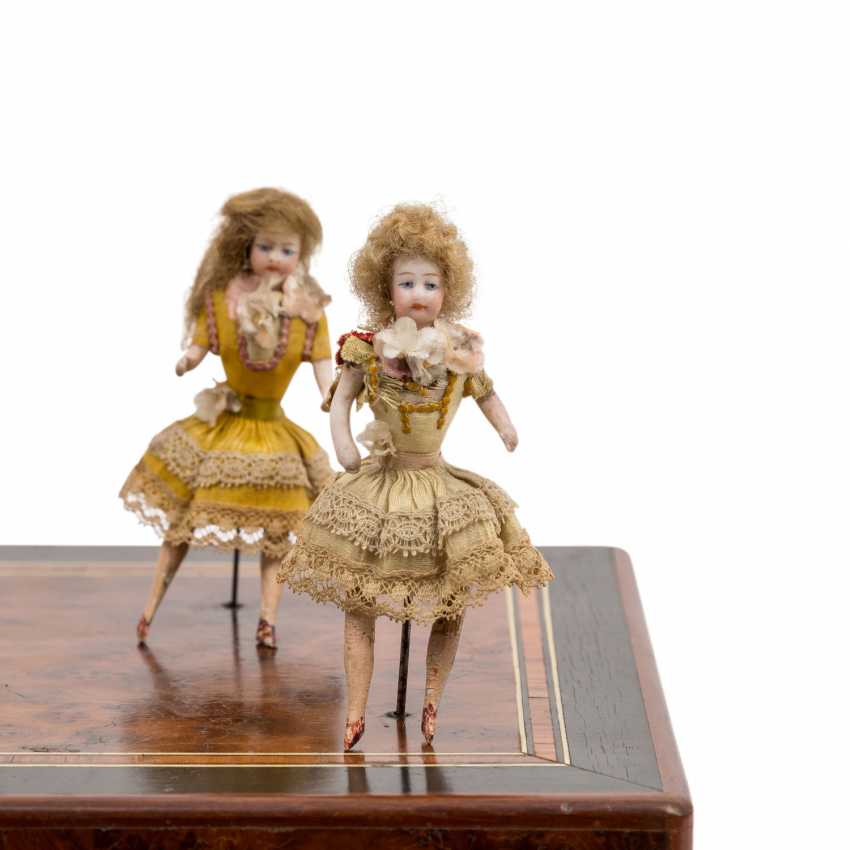How to kizomba dance steps
How to dance Kizomba | iASO Records
Kizomba is originally from Angola. As with other Latin social dances, Kizomba combines elements of European ballroom dance with African dance movement and timing.
Kizomba Timing:
Kizomba is in 4/4 time - which means that there are four beats to every measure. The larger cycle in the music revolves around 4 measure cycles - ie: each measure has four beats, so when 4 of these measures pass, 16 beats will have passed.
Basic Steps:
In Kizomba, there are several basic steps - each with its own timing. In addition, in Kizomba there are a variety of dance moves that bring the dancers temporarily away from the basic step patterns. Part of the challenge of dancing Kizomba is for leader and follower to remain synchronized in their steps.
Basic Step Variation A
The most basic step in Kizomba is a side to side two step. It starts for the leader on the left foot and for the follower on the right. The leader steps to the side with the left foot, then brings the right foot together with the left in a tap (do not leave your weight on the right foot). Then the leader steps to the right with the right foot and brings the left foot together with the right for a tap step. The pattern then repeats. Each pattern takes one measure to complete - with a step or tap on each beat. The follower mirrors the leader with the opposite foot.
Basic Step Variation B
Variation B illustrates just how complicated Kizomba's basic step patterns are in comparison to other social dances. On the surface, the step is fairly simple: The leader begins by stepping forward with the left foot, then steps with full weight on the right foot (either forward or in place), and finally taps with the left foot without leaving any weight on it. Now for the second half of the step, the leader steps again with the left foot, but this time backwards, steps back with the right foot, and taps back with the left - repeating the initial forward pattern but this time back in the opposite direction.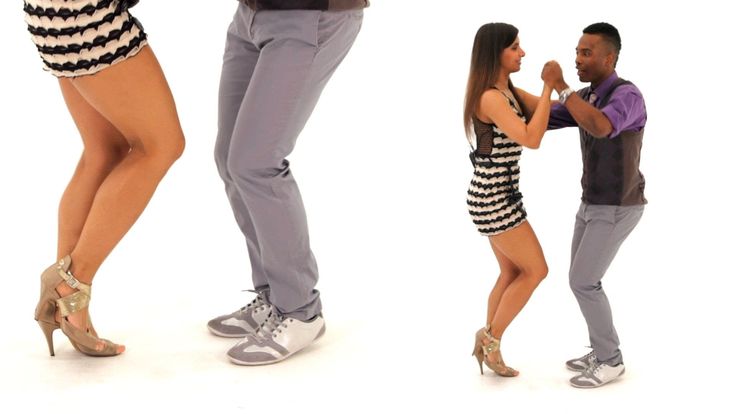 So the pattern consists of three steps in each direction. Each group of three steps begins with the same foot - for the leader the left foot. The follower mirrors with the opposite foot, and so always begins with the right foot. Each step and tap falls evenly on a beat, so the entire forward and back pattern (which consists of 6 steps) takes 6 beats. Here is where things get tricky. Kizomba has 4 beats to a measure, so the 6 beats do not complete 2 measures. If you begin this step pattern on beat 1, you will end it on beat 6 rather than beat 8. When you step again after completing a cycle of the pattern, you will be stepping on 7 rather than 1. The entire forward and back 6 step pattern must be repeated 4 times before it finally ends on 8. This complexity means that dancers must be particularly aware of their timing, or risk getting lost. When embarking on Basic Step Variation B, dancers must repeat the forward and back pattern 4 times before changing to a different step. Alternatively, dancers can use more complex footwork - cha cha steps etc - to transition to another pattern midway through a cycle.
So the pattern consists of three steps in each direction. Each group of three steps begins with the same foot - for the leader the left foot. The follower mirrors with the opposite foot, and so always begins with the right foot. Each step and tap falls evenly on a beat, so the entire forward and back pattern (which consists of 6 steps) takes 6 beats. Here is where things get tricky. Kizomba has 4 beats to a measure, so the 6 beats do not complete 2 measures. If you begin this step pattern on beat 1, you will end it on beat 6 rather than beat 8. When you step again after completing a cycle of the pattern, you will be stepping on 7 rather than 1. The entire forward and back 6 step pattern must be repeated 4 times before it finally ends on 8. This complexity means that dancers must be particularly aware of their timing, or risk getting lost. When embarking on Basic Step Variation B, dancers must repeat the forward and back pattern 4 times before changing to a different step. Alternatively, dancers can use more complex footwork - cha cha steps etc - to transition to another pattern midway through a cycle.
Basic Step Variation C
This pattern is similar to B, but adds a syncopated (cha-cha) step between the 3rd & 4th, and 6th & 1st steps of each pattern. So the leader steps forward with the left foot on 1, steps with the right foot on 2, steps with the left foot on 3 (this time with full weight), steps with the right foot quickly on 3-and (the beat midway between 3 and 4), and then steps back with the left foot on 4, steps with the right foot on 5, and then steps with the left foot (full weight) on 6, with the right on 6-and, finally with the left forward on 7 - which begins the next repetition of the pattern. The follower mirrors with the opposite footwork.
Basic Step Variation D
This step is the most simple of all, but is usually used within more complicated patterns rather than on its own. It's a simple left, right, left right - just as in merengue. So the leader steps with the left foot on 1, with the right foot on 2, with the left foot on 3, with the right foot on 4, etc. The follower mirrors. This step can be combined with variation B or C so that the dancers can exit from variation B or C without completing a full 4 cycles.
The follower mirrors. This step can be combined with variation B or C so that the dancers can exit from variation B or C without completing a full 4 cycles.
These basic steps of Kizomba and are used as building blocks to construct complex patterns. The variety of basic steps and free-style of the more complex patterns make Kizomba a difficult dance to understand and follow. The videos on this page give examples of authentic Kizomba dance. The first video gives instructions for how to dance Kizomba in Portuguese. The other videos are of breathtaking Cape Verdean and Angolan dancers.
Latin Revolution Dance Academy | Learn Kizomba Dancing Here in Toronto
Kizomba is a slower, romantic, more sensuous rhythm than the traditional Angolan Semba dance. The dance and music originating from Angola. If you haven’t seen Isabelle and Felicien style of Kizomba take a look below:
Kizomba is another in demand and approved dance genre that originated from Semba and is highly used across the globe. It came into being in the early 1980s, which is known for its soft and slow beats. It is entirely a Latin dance whose roots are from Africa. If you want to get your hands on this exceptional dance genre, our dance academy ‘Latin Revolution Dance’ is here for you that makes you a trained dancer of your required genre.
It came into being in the early 1980s, which is known for its soft and slow beats. It is entirely a Latin dance whose roots are from Africa. If you want to get your hands on this exceptional dance genre, our dance academy ‘Latin Revolution Dance’ is here for you that makes you a trained dancer of your required genre.
Be it Salsa or Bachata or Latin; our academy offers every dance class where our professional and well-trained instructors put their effort into making you professional so that you can further train other students as well.
Every genre consists of different professors. We propound these services at a limited cost, and with our 60 minutes class, held every week, you can learn everything from basics to end. Our academy is situated in Toronto and is one of the pre-eminent dance academies you will ever come across.
We extend individual classes for those who are willing to give extra payment. We will provide you with the cooperative partners who will fully coordinate with you. If you are a dance lover, come over our academy, we will make you professional. Let’s further push on with the topic and talk about ‘Kizomba Dance’ in detail to make it more comprehensive for you.
If you are a dance lover, come over our academy, we will make you professional. Let’s further push on with the topic and talk about ‘Kizomba Dance’ in detail to make it more comprehensive for you.
What is Kizomba Dance
You might have gone through this word ‘Kizomba’ that is another favoured dance genre and is being made out everywhere. It doesn’t take a lot to hold your grip on learning it. With practice and diligence, you can hit the floors. It is a partner dance where both members should be close enough to practice intimacy, which is required in it. It is as romantic as you will let it be.
However, you don’t need to come extra close to each other. It entirely depends on you. You can become an expert in it by successfully performing on 3 or 4 moves. It would help if you felt the music being played behind, for which you should keep listening to Kizomba music more often. We give proper training from level 1 to the last level so that people fully trained themselves.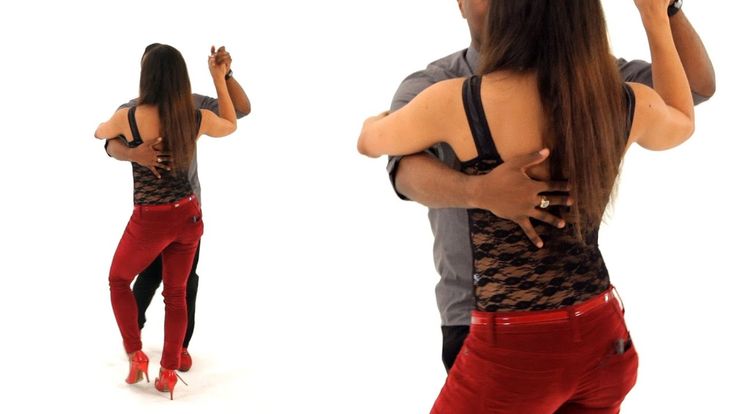 It is enriched with delightful music that lets people express their enjoyment which is clearly shown on your face while dancing.
It is enriched with delightful music that lets people express their enjoyment which is clearly shown on your face while dancing.
Many people assume that Kizomba is quite easy to be performed as it requires only a few classes to get the hands-on it. However, it is not valid. Every dance genre needs proper time and understanding, after which you can finally become a professional. With years of practice, one can achieve that professionalism.
Kizomba – A Natural Dance
One of the remarkable Tv moderators once said that the Kizomba move falls into place without any issues for individuals in her nation. Kizomba is as healthy as drinking water! Children move Kizomba; youngsters move it as well; we as a whole convey through it.
You can nearly observe the spirit of the individual you are hitting the dance floor within it. It’s our way of life. It’s us. In Kizomba, we comprehend the world through touch. It resembles when children contact things to get them; similarly, we impart through touch.
For individuals from different nations, from the outset sight, it may resemble a sexual thing. Be that as it may, it’s definitely not. At the point when you move Kizomba, you can comprehend the delight that we have.
Kizomba Music History
Kizomba music took inspiration from much other African music. It came into being in 1984 in Angola, and since then, its acceptance keeps on expanding. Even today, it is being practiced in Angola. Though in the early 1960s, Angola already put their hands on Semba music due to which we can consider ‘Semba’ is an antecedent of Kizomba, it officially produced in the 1980s.
In Angola, there is no difference between both Semba and Kizomba dance styles, but other countries practice both dance genres according to their origin and influence. As the Kizomba started emerging, every musician started playing it across the globe. In 1975 the war began in Angola, forced musicians to find opportunities in other countries, and it is how this music emerged internationally.
With time it started entering various countries, and today it has gone through at every corner of the world. Its soft and delighted music forced people to dance on its beat. It has a slow pace that doesn’t require immense effort to perform on it. Various Angola musicians became a reason for its vogue and regard. Various Kizomba musics are being popular countrywide and are being played in more than 90 countries.
There is a fun fact about Kizomba that you can’t dance on it in the United States outside its significant cities, and many people might not be aware of it.
Importance of Kizomba
Kizomba is a dance style that has gotten extremely conspicuous in Angolan culture in the late decades. “Kizomba” signifies “festivity” or “gathering” in Kimbundu, a Bantu language. The dance style was created in Angola during the 1980s and 90s in the area around the capital, Luanda.
It started as a melodic style, at that point formed into a move related to the music. A hit the dance floor with style. It is changed into a productive step in its cutting edge adaptation. The Kizomba dance is related to a sensual meaning for a few – at any rate to the individuals who didn’t grow up with it. Yet, to local Angolans, it’s liberated from any such importance.
It is changed into a productive step in its cutting edge adaptation. The Kizomba dance is related to a sensual meaning for a few – at any rate to the individuals who didn’t grow up with it. Yet, to local Angolans, it’s liberated from any such importance.
Kizomba Dance Levels
We have various levels of Kizomba Dance to know at which position you better fit in. Later we are going to discuss different levels, and you have to choose from where you should make a start. From beginners to experts, we teach you every step with excellence and fun so that you come out from our academy as an expert. Those level incorporate:
1- Beginners Level
As it clearly states that level 1 is for those who are just about to start and know nothing about it. As you are a beginner, we will keep the moves simple and easy to understand without letting you take any burden. We will teach you how to take turns and how to hold a grip on movements. Even if you have already received basic classes, you are free to enroll yourself at this level for more practice.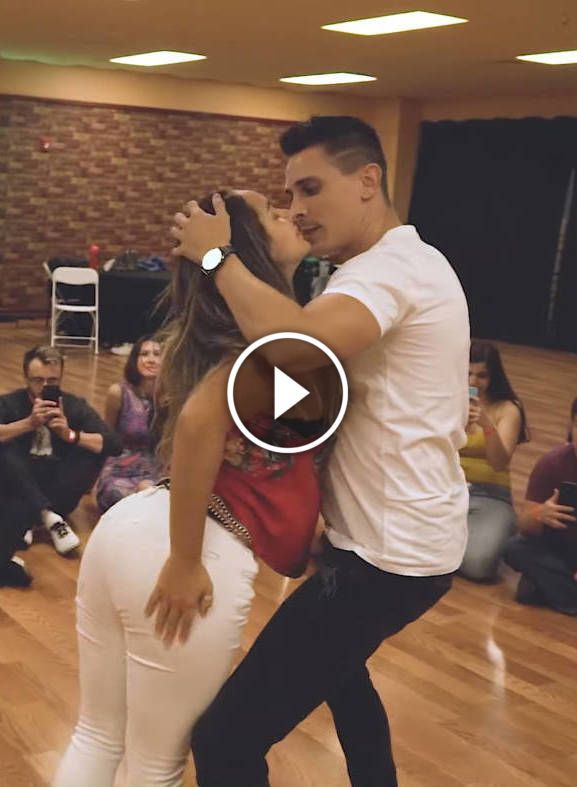 Once we are sure that you are performing well, you will proceed to the next level.
Once we are sure that you are performing well, you will proceed to the next level.
2- Intermediate Level
It is for those who are now familiar with the basics and want to move ahead. It requires a bit of complexity because now you are about to learn further, and with each passing level, you have to go to the advanced side. Though it will take more time on level 2 yet with consistency and hard work, you can achieve it. We will teach how to make compatibility with your pattern and how to follow each other’s steps and direction. The Kizomba dance is all about intimacy, and if you are not into each other, you won’t be able to perform well. Once you are done with this level, you have become a professional Kizomba dancer because our next level doesn’t require any training. It is all about taking challenges that are accepted by trained dancers
3- Advanced Level
The last step is to show the actual results of your skills that you keep on polishing in the last 2 levels.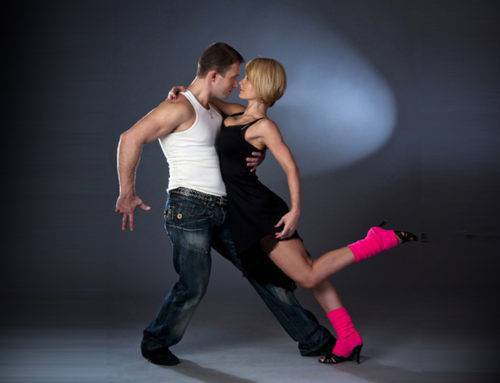 If you call yourself an expert in Kizomba dance, you will face off with other trained dancers to know how much you have accomplished. If you fail, you have to start again doing practice and keep on doing once you are up for the challenge. The only challenging level is ‘Advanced’, where you will learn new and hard things that might take a lot of time for you to learn. Our trained instructors will make sure you will get the hands down instruction while learning any new dance genre. We also organize events for our students, where they can show their talent along with trained partners.
If you call yourself an expert in Kizomba dance, you will face off with other trained dancers to know how much you have accomplished. If you fail, you have to start again doing practice and keep on doing once you are up for the challenge. The only challenging level is ‘Advanced’, where you will learn new and hard things that might take a lot of time for you to learn. Our trained instructors will make sure you will get the hands down instruction while learning any new dance genre. We also organize events for our students, where they can show their talent along with trained partners.
How to Dance Kizomba
At the start, you don’t need to make any twist and turn because slow and romantic music is its center of attraction. People usually get attracted to this dance origin because of its delights. That’s why compatibility means a lot in this dance style. It is a tapered dance that needs collaboration between a couple that will lead to successful dance steps/moves.
It doesn’t need to adopt the necessary skills to perform on Kizomba songs because the steps are straightforward, soft, and easy to operate. It’s primary dance; there are others, including Tarraxinha, Quadrinha, and Ventoinha. Moreover, the Urban Kizz or urban kizomba has become very noteworthy among everywhere.
It’s primary dance; there are others, including Tarraxinha, Quadrinha, and Ventoinha. Moreover, the Urban Kizz or urban kizomba has become very noteworthy among everywhere.
The Kizomba comprises 4 beats while each beat contains 4 pulses. If we go into the formula of 4*4, it means it has 16 pulses. Those who are going to start from zero let’s get along with the article. It is a two essential step series that needs to be carried out by both parties. It can be done in a way that a man starts from the left foot while taking a step to another side while a woman performs it with the right foot.
The main person puts his right foot next to the left with a connection while keeping the weight on the right foot. Then do the opposite, with a right foot, take the right step and go along with the left foot next to the right by touching the ground slowly. The one who is following the direction will do the same with the other foot. Let’s go in depth and discuss it in detail.
1- Practice Basic Steps
How to make a position is one of the essential steps for any dance genre.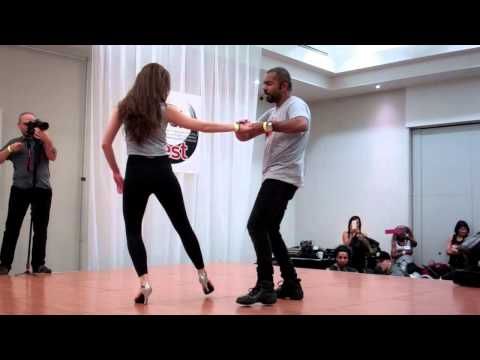 For Kizomba Dance, make sure you are standing straight with crossing foot. Look forward while keeping your spine moderate. Move the toe of your left foot to point marginally outward on the left half of your body. It will help as you make the primary strides of the move. While dancing with your pattern, look straight into each other’s eye instead of looking at the floor.
For Kizomba Dance, make sure you are standing straight with crossing foot. Look forward while keeping your spine moderate. Move the toe of your left foot to point marginally outward on the left half of your body. It will help as you make the primary strides of the move. While dancing with your pattern, look straight into each other’s eye instead of looking at the floor.
2- Coordinate Weight and Feet
While listening to Kizomba music, raise your left foot and lift your left hip and similarly lift your right foot while raising your right hip. Repeat the steps until you start feeling the beat and thoroughly enjoying it. While doing all this process, you can bend your arm towards the elbow and can slightly play with your arms in a specific area while enjoying the beat. It will assist in profoundly enjoying the beats.
3- Work on a Bass Beat
As soon as you hear the first bass beat, put your left foot forward, and similarly on the second fast beat, put your right foot forward, and while dancing to the music, shake your hips too.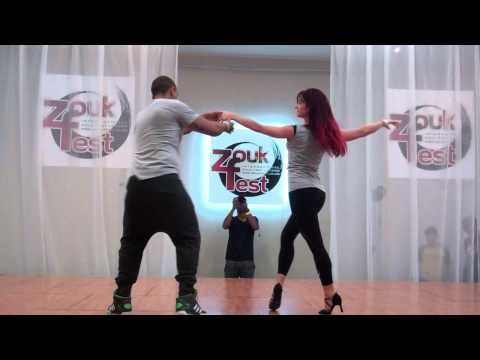 Once both your left and right foot are together, take a step back to the right side on the next beat. In Kizomba music, some instrumental music occurs before bass music. The best way to practice is to keep listening to Kizomba music and do homework.
Once both your left and right foot are together, take a step back to the right side on the next beat. In Kizomba music, some instrumental music occurs before bass music. The best way to practice is to keep listening to Kizomba music and do homework.
4- Dance with your Partner
While dancing with your partner, you should be close enough that your chest meets their chest without putting your weight on them. According to Kizomba instructors, it is said that 20% of your weight should be on them. However, it will be hard for beginners, yet with time and hard work, you can achieve it.
Once you get comfortable with them, you can put your 20% weight on them. Afterward, your right hand should be at your partner’s waist while dancing. Lift your shoulders so that you can quickly put your hand on their shoulder. Please don’t hold your partner too close because it can become difficult for you to dance. Afterward, put your left arm on your partner’s shoulder.
5- Practice Kizomba Dance
Usually, all the Kizomba songs start with soft music for at least 15 seconds. During that time, you can experience unique dance styles with your partner as the soft music slows down; you are free to dance on the steps. If you are dancing in a club, don’t hesitate to switch the partners while dancing because it will develop your mood. On the floor, move forward and backward while dancing. Your leader will decide on which direction you have to move first. He will likewise determine the length of 1 beat and how long you have to perform it. In Kizomba dance, there is a term used ‘Saida,’ which is Kizomba dance, where you have to break from your partner to dance freely. These things need your attention and time.
Kizomba Popularity
Kizomba is being performed in many countries where it is immensely popular and keeps on gaining all the attention. The states where it is being implemented incorporates Cape Verde, Angola, Guinea-Bissau, Equatorial Guinea, Portugal, Mozambique, Sao Tome, and Principe, Martinique, East Timor, Brazil and the territory of Macau.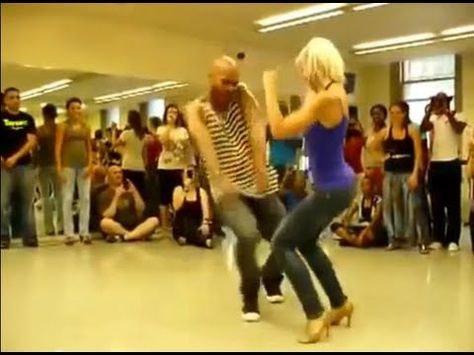
Various people who are deeply involved in this dance genre are promoting this culture in many other countries, which is why it has spread worldwide. Various dance academies have originated for this purpose, and so does our academy where more than a thousand people enroll themselves for Kizomba dance practice. We make sure to bring out the best from them under the guidance of our trained professors.
Kizomba Songs
Various songs of Kizomba are being observed everywhere due to its soft and melodic tune. You can get your hands on its tunes. If you are a beginner, I would recommend you to start from these tunes and do practice on its tunes.
1- Dr. James – Você Me Mata
Have fun on this kizomba tune with this moderate musicality melody by Dr. James. Did you realize that the title of the melody “Você Me Mata” signifies “You murder me”? Have you at any point hit the dance floor with an outsider and felt like you’ve known him for your entire life? It appears that specialists are stimulated in their souls just by playing out their kizomberas pieces that pass on so much friendship and that behind each letter there is a story to share.
2- Daddy Killa – Leva-me (Lyrics)
This song has more than 70,000 searches and is being played excessively. Let’s dance on this song and become a Kizomba expert. It will sharpen your moves and will let you feel more of it.
Kizomba Music
Before learning Kizomba dance, one should be aware of Kizomba music because if you can’t understand the music, you won’t have a grip on the dance. You can choose which music you want to practice moves. Let’s list the music that is common everywhere.
1- Traditional/Retro Kizomba
It originated in the 1950s in Angola, and it is associated with the traditional Kizomba dance. It comprises heavy beats and esthetic rhythms to do the enterprising movements. Since 1950 many changes have occurred in this dance because every instructor adds their own unique styles. Today it is being played in every dance academy where people teach kizomba dance.
2- Semba Music
It combines the primary Kizomba steps with fleshly music. In Semba music, both partners should stand close to each other while their chest should be attached. It is how people dance to Semba music. It is also a piece of old music that is popular everywhere and is being played every time.
In Semba music, both partners should stand close to each other while their chest should be attached. It is how people dance to Semba music. It is also a piece of old music that is popular everywhere and is being played every time.
3- Upbeat Kizomba
This type of music combines the moves of kizomba with a rapid, more electronic kind of music. The movements are slightly the same, but a bit is changing to get along with the music. Those who are up to fast music often get their hands on this one.
4- Zouk Kizomba
As Kizomba is all about intimacy, so it also requires to be deeply connected for both the partners. It has a fast tempo, and both the partners need to be close enough to dance on its beat. It is a part of music that involves all the fun and amusement. Zonk is another notable music that has been originated for a long time, and today it’s popularity is worldwide.
What’s Next
Let us explain to you a few essential points with you regarding our Latin Revolution academy. In case you have made your mind to be our next student in our Toronto based academy, our every dance course comprises 5 classes for 5 weeks as every class is being held only once for 60 minutes, where instructors guide you with fun and excellence. You don’t need to worry about the partner to learn dance as we have already arranged it for you. We also conduct private lessons to those willing to pay additional fees because we have to schedule everything for you separately. Our official website has all the information available on it. In case you can’t understand something, feel free to email us as we mentioned our mail id too. We would love to hear from you.
In case you have made your mind to be our next student in our Toronto based academy, our every dance course comprises 5 classes for 5 weeks as every class is being held only once for 60 minutes, where instructors guide you with fun and excellence. You don’t need to worry about the partner to learn dance as we have already arranged it for you. We also conduct private lessons to those willing to pay additional fees because we have to schedule everything for you separately. Our official website has all the information available on it. In case you can’t understand something, feel free to email us as we mentioned our mail id too. We would love to hear from you.
Final Thoughts
Kizomba Dance music is one of the captivating and delightful music that is popular for its spice and entertainment. We have written a detailed article about our company that is situated in Toronto and about the service that we offer to our students. If you are interested in dancing and want to experience different dance genres, Kizomba dance is for you.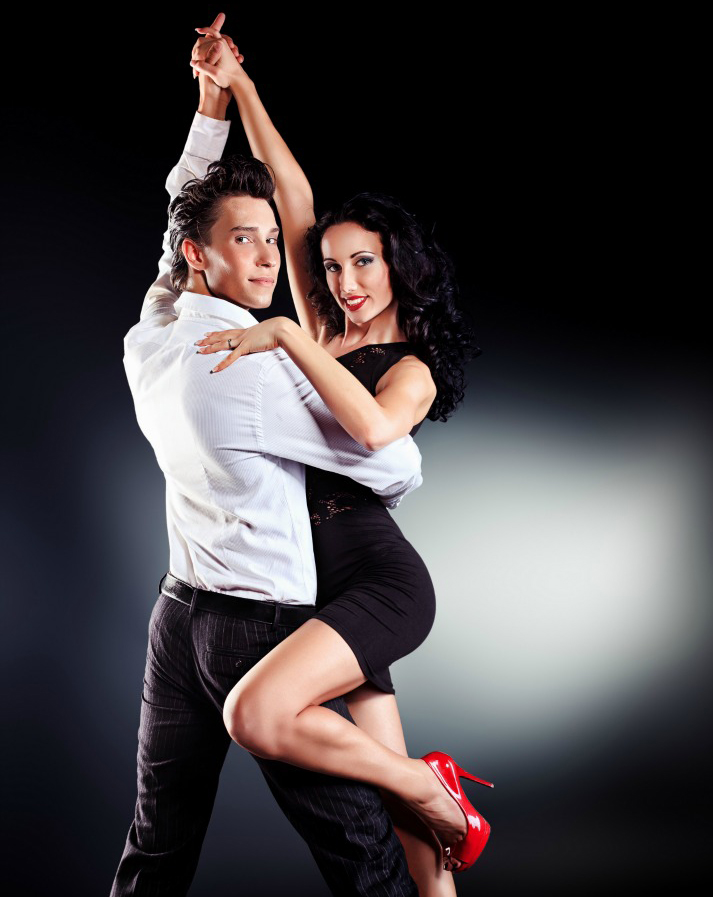 Apart from Kizomba, we teach many other dance genres too. Make your body and soul relax with dance and music because it is the only source of letting you feel independent and flying. I hope this information is enough to make up the mind. Be our next student and learn Kizomba dance with supremacy and high quality.
Apart from Kizomba, we teach many other dance genres too. Make your body and soul relax with dance and music because it is the only source of letting you feel independent and flying. I hope this information is enough to make up the mind. Be our next student and learn Kizomba dance with supremacy and high quality.
basic moves for beginners with video
Contents
This is not just a dance direction, it is a whole subculture: stormy, but at the same time very romantic. A gentle African dance is performed exclusively in pairs. Looking at people dancing kizomba, one might get the impression that they are in love - it looks so soft and sincere. Want to move like the couples in the video tutorials? The team of the Laboca dance club will be happy to teach you!
Kizomba rules
The accompaniment of kizomba gained modern sounding due to electronic instruments. They also allow you to create the desired rhythm with a size of four by four measures. This style starts a new theme song every sixteen beats.
The movements of kizomba are very similar to bachata: they are also simple and uncomplicated. You can recognize kizomba by its smoother elements, the placement of accents with the hips, the very strong hugs of partners, the sedentary body and the synchronism of the performers in a pair. Leading, unlike Latin American dances, is carried out from the chest. Kizomba steps are done on soft, slightly bent knees. The head is kept straight all the time and does not "jump".
In couples, as in bachata, the man leads, the woman simply follows the direction given by him and decorates the dance with elements of improvisation. The partners are as close as possible to each other, the man gently grabs the woman's back, and her left hand lies on his neck.
A distinctive feature of kizomba is the so-called Tarraschinha - the ability to dance with almost no noticeable movements. These are the waves, the swaying of the pelvis, the barely noticeable curves of the body, which make kizomba so seductive.
Sign up for a trial lesson
Kizomba basic movements
It is important to realize that kizomba is an African dance that came to us from the rituals of wild tribes. It is believed that it began to spread across European dance floors quite by accident. And even though the direction has already acquired modern features, the main movements in kizomba have not changed: the performers must catch the rhythm of the music with their body and embody it in their movements and vibrations.
At the kizomba class you will not learn complex elements and intricate figures, but master the basic steps, get acquainted with tarraschinya and begin to dance calmly and smoothly.
It is important to improve the plasticity of the body, learn how to effectively rotate the hips and move gently, but rhythmically.
The basic steps of kizomba look like stepping over with the transfer of body weight from one side to the other.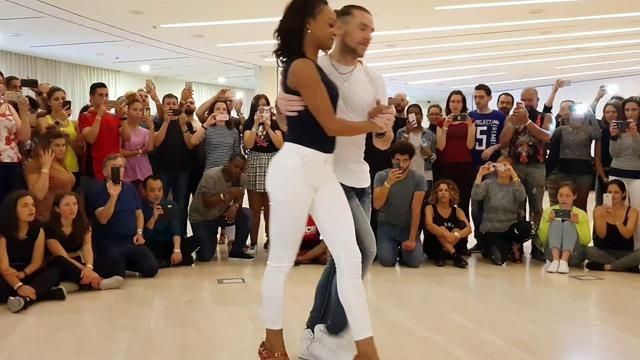 The man starts on the left foot, the woman on the right. Try to cross in one place first.
The man starts on the left foot, the woman on the right. Try to cross in one place first.
The next movement is in a circle. The man takes a side step to the left side, leaving the weight on the left leg. The partner puts his right leg aside and then takes a side step, again without transferring body weight. The woman mirrors his exercises. Try practicing this movement as you move around the room.
Another basic movement: the partner takes a step forward with the left foot, then with the right foot and puts the left foot forward without transferring body weight to it. Then - again a step with the left, but already back. The woman duplicates the man's movement using opposite legs.
Having mastered the three basic movements, you are already dancing kizomba! And for spectacular tarraschinya and the ability to freely improvise, come to the Laboca dance club!
Kizomba dance video
How to dance kizomba, how to learn to dance kizomba?
- home
- Kizomba
- How to dance kizomba
Learn to dance kizomba? The answer to this question is in the words "want" and "feel". Of course, like all dances, kizomba must be started with basic steps. You can learn how to dance them from video lessons, but it’s better to visit kizomba lessons for beginners. A few basic "pas" is the minimum basis that is necessary in order to start making the first confident movements in kizomba. Their correct name, of course, comes from Spanish and Portuguese, but we will try to explain them to you in Russian as well, so don't worry about the language difference.
Our trainers are excellent professionals who have been teaching this trendy dance direction for many years. Be sure that when you come to us for training, you will learn from professionals!
How to dance kizomba ? The first thing to remember is that kizomba is only danced in pairs. Therefore, the main skills that you should learn during our lessons is a sense of rhythm and interaction (following and leading in pairs).
Kizomba is one of the simplest dances, its distinctive feature is the absence of heavy figures, high-speed dance movements. Often the partner duplicates and “mirrors” the movements of the partner, so that the couple looks harmonious and harmonious. The smooth movements and flexible lines of the hands of both dancers add sensuality and sexuality to the dance.
How can I dance kizomba if I have never danced before? It's not a problem at all. In order to learn how to dance, there is no need to have serious dance training, in the social version of kizomba, and this is exactly the dance we teach in our schools (that is, partners change during the dance, and do not form stable pairs), no one performs serious lifts, rolls, does not throw partners in the air or does not make serious backbends. These are very simple “pas” and basic steps. The only moment of difficulty is only the technique of steps in pairs.
These are very simple “pas” and basic steps. The only moment of difficulty is only the technique of steps in pairs.
This dance is very easy to learn. In kizomba, you just walk around. As you walk at home, to the store, slowly and lazily. The slow rhythm makes it easy to learn and easy!
How to learn to dance Kizomba can be told by our experienced trainer and video lessons that you can find on our website. However, we affirm that without the atmosphere of the lesson, without group lessons, without the feeling of the audience, you will not be able to fully enjoy the dance, relax and make this dance really beautiful!
The most important thing in kizomba is feeling and sensitivity. And this, you will agree, is the scourge of all modern girls in Russia. We are much more reserved than our African and Latin counterparts. Kizomba mixes romantic and fiery rhythms. If you really can't sit still, barely hearing this music, we invite you to come to our trainings to get a base of options on how you can move beautifully. Our trainers will offer beginners the basic steps, and then show the simplest connections and combinations of movements, lead them all the way to the level of a high-class dancer, help open your soul and make the dance sexy. We will teach plasticity, grace and stretching, your figure will acquire the desired shape, and movements will become unprecedentedly light.
How to learn to dance kizomba? The answer is simple - you need to want to dance it. Let go and step over all your complexes and omissions, feel yourself, your body, music and partner!
SIGN UP FOR A FREE LESSON
First lesson - FREE
Monthly subscription not linked
Student reviews
Reviews from the site Yandex maps
About the homely atmosphere at the dance school and the cheerful teachers.